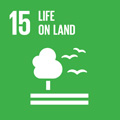- Docente: Santo Privitera
- Credits: 6
- SSD: L-FIL-LET/01
- Language: Italian
- Teaching Mode: Traditional lectures
- Campus: Bologna
- Corso: Second cycle degree programme (LM) in Archaeology and Cultures of the Ancient World (cod. 8855)
-
from Nov 11, 2024 to Dec 18, 2024
Learning outcomes
At the end of the seminar students will be able to interpret issues related to specific historical phenomena in a diachronic and transversal perspective within the Aegean Bronze Age framework, thought the elaboration and synthesis of the data coming from the analysis of written records and material sources and from the collective debate originated from the contact with other people, especially the civilizations originating in the Near East and Anatolia. They will be able to formulate autonomously and in an organized way a research path or an intellectual work, using the specific acquired tools with methodological rigour, precision and accuracy.
Course contents
The course deals with the study of the Aegean civilizations of the Bronze Age (third and second millennium B.C.E). Lessons will firstly deal with geography and history of the researches; then with theCycladic civilization; the Cretan sites and the different paths that brought about the formation of the first Minoan palaces; the impact of the Cretan civilization outside the island and on the Greek mainland communities; and eventually the Mycenaean civilization, with the analysis of a few key-sites, such as Lerna, Mycenae, Tiryns and Pylos. Last but not least, attention will be given to the causes and long-lasting factors that brought about the decline and eventual collapse of the Mycenaean palatial states.
Readings/Bibliography
L. Bombardieri, G. Graziadio, E. Iasink, Preistoria e protostoria egea e cipriota, Firenze 2015 (compulsory)
A.L. D’Agata, L. Girella, Civiltà dell’Egeo, Carocci, Milano (compulsory for students who do not attend the course).
Selected essays, included in:
E. Cline (a cura di), The Oxford Handbook of the Bronze Age Aegean, Oxford 2010
C. Shelmerdine (a cura di), The Cambridge Companion to the Aegean Bronze Age, Cambridge 2008
FIgures, captions and plans from
ppt presentations by the teacher
- figures in J.-C. Poursat - C. Knappett, The Art and Archaeology of Aegean Bronze Age: A History, Cambridge 2022
Teaching methods
Lesson, followed by questions and possibly debate
Assessment methods
An interview concerning the contents of the course. The interview will also serve as an opportunity to assess the candidate's ability to navigate the content of the discipline.Evaluation will also take into account active participation (if any) at lessons.
The achievement of a comprehensive understanding of the topics dealt with in the course, along with a good command of expression and technical language, will result in an excellent evaluation. Mnemonic learning, combined with the ability to provide concise and well-analyzed responses in appropriate language, will result in satisfactory evaluations. Lack of the contents of the course and the use of inappropriate language, even within the context of minimal understanding of the exam material, will lead to grades that do not meet the minimum requirements.
Teaching tools
Booktexts, powerpoint presentations at lessons; webquest.
The teaching tools used during the lessons will also be available on http://virtuale.unibo.it/
Students who require specific services and adaptations to teaching activities due to a disability or specific learning disorders (SLD), must first contact the appropriate office: https://site.unibo.it/studenti-con-disabilita-e-dsa/en/for-students .
Office hours
See the website of Santo Privitera
SDGs




This teaching activity contributes to the achievement of the Sustainable Development Goals of the UN 2030 Agenda.
